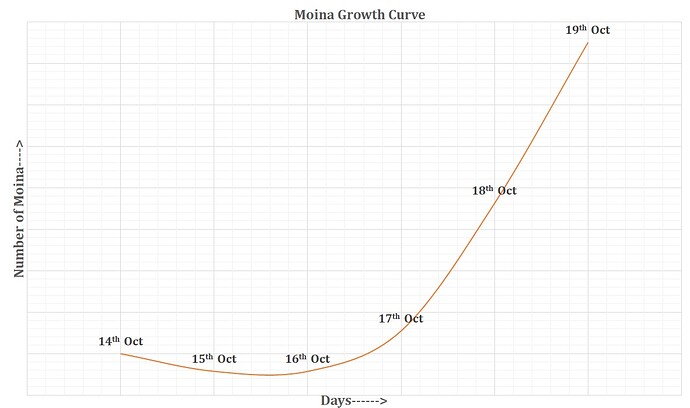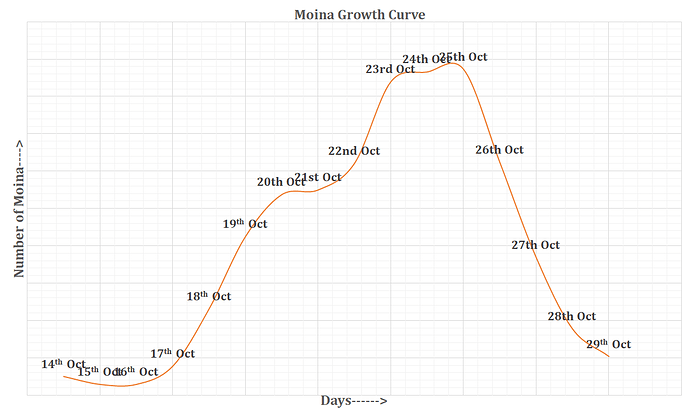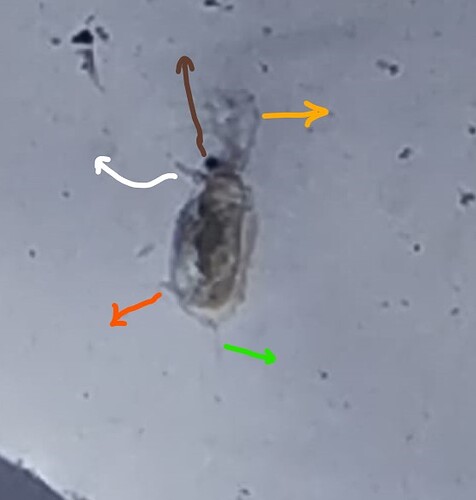CUBE Nerul Home Lab
Moina Model
Summary of the experiment with Moina.
Objective: To observe a colour change in Moina when they are kept in low-oxygen conditions.
Date of Setup preparation: 14th Oct 2020
Result: The objective wasn’t achieved according to the expectations. The expectations were to observe the first colour change in Moina [kept in the cups having 250mL of dechlorinated water+6drops of milk (on alternate days)] on the third day i.e. on 17th Oct. But no colour change was seen in Moina.
Below is the link of the video from the 3rd day.
https://drive.google.com/file/d/1hgg8cKph8Ja0rPe4Sj4TLcGAQXm03ryt/view?usp=sharing
Two of the
test cups (with one replicate each) having
4drops and
6drops of milk (milk added on alternate days) were added with milk on
14th, 16th, 18th, 20th Oct whereas the remaining test cup(s) (one replica) were added with
2drops of milk daily. Moina in none of the test cups showed a colour change from colourless to coloured.
The
control Moina (in cups) were added with 1drop of milk daily.
Moina in control cups remained colourless throughout and are still colourless.
No colour change was seen in Moina from all the test cups and the control Moina remained colourless.
Meanwhile no colour change was seen, number of Moina in the cups increased as well as decreased i.e. they followed a growth curve.
The above growth curve [X-Axis: number of days from 14th to 28th Oct, Y-Axis: number of Moina in all (8) the cups aggregate] tells us about different phases of growth of Moina.
From 14th to 16th Oct, the number of Moina remained constant more or less–> Lag Phase.
From 17th to 23rd Oct, the number of Moina increased–> Exponential Phase.
From 23rd to 25th Oct, the number of Moina remained constant–> Stationary Phase.
From 25th Oct till now, the number of Moina has been decreasing that marks the onset of death phase.
This growth curve is more or less similar to a bacterial growth curve.
Explanation of the observations:
As there was no colour change seen in Moina from any of the test cups at any point (totally opposite of what was expected), I think there are two reasons for this both because of an improper design of the experiment.
i) The design had 8 cups in total that were divided into 4 sets of two each. Control and Test1 cups were added with 1 and 2drops of milk daily. The Test2 and Test3 cups were added were 4 and 6drops of milk on ALTERNATE DAYS.
This is where the devil was, I think. As the expectations were to observe the first colour change in 6drops of milk set on the 3rd day (17th Oct), milk should’ve been added everyday so that a low-oxygen condition would’ve been maintained. But as 4 and 6drops of milk were added on alternate days, the low-oxygen condition didn’t sustain. In addition to this, the cups have a broad mouth and were covered with a cotton cloth, oxygen kept on diffusing in the water due to which the dissolved oxygen level of the water didn’t really decrease till such an extent, where Moina would’ve started the production of extra-haemoglobin.
That is why the test Moina appeared colourless throughout.
ii) The expectations of observing a colour change in Moina (from the test cups) on the third day were not of this experiment. This can be expected when 6drops of milk are added in 250mL of DC water daily and not on alternate days. Also, in the same experiment, plastic bottles having a narrow mouth plugged with cotton were used. Plastic bottles having a narrow mouth and plastic cups having a broad mouth do make a difference in the giving entry to oxygen inside. Here, the difference that was seen was the bottles having Moina+water+6drops of milk daily, colour change was seen on the third day whereas we saw no colour change in this experiment.
GOOFUP:
Not designing an experiment with proper test sets.
This improper design of the experiment with expectations from another experiment led to an unexpected outcome of this experiment!
I learned that while designing an experiment like this, we should keep in mind the smallest of things such as the size of the container, the drops of milk that are being added and whether expectations are according to the setup…
Celebration:
Learning from the above goofup, another design of the experiment has been planned, this time with proper test sets.
Keeping in mind the expectation of observing a colour change in Moina, this experiment will give results.
The design will be shared later tomorrow.
Till then, everyone please suggest improvisations on the design.



